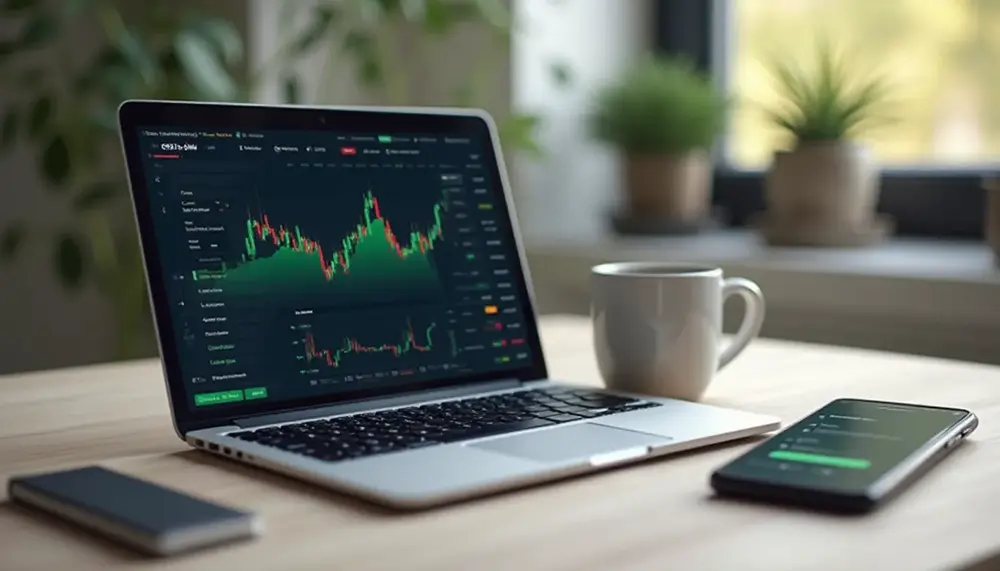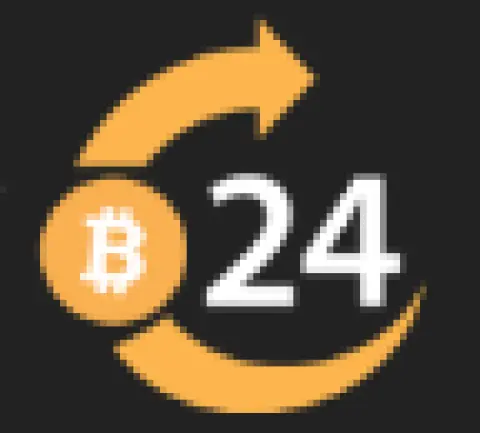Table of Contents:
Market Framework: Crypto Ecosystem and Regulatory Realities in Russia
Market Framework: Crypto Ecosystem and Regulatory Realities in Russia
Russia’s crypto market, to put it bluntly, is a bit of a paradox. On one hand, there’s a feverish appetite for digital assets, fueled by surging prices and a growing sense that traditional finance just isn’t cutting it anymore. On the other, the regulatory climate is, well, unpredictable—sometimes restrictive, sometimes oddly permissive, but always in flux. This tension shapes everything, from the wallets people use to the way they move money in and out of crypto.
Let’s get specific. Russian users face unique hurdles: not every international wallet or exchange is available, and new restrictions can appear overnight. For example, certain global platforms have limited or outright blocked Russian accounts, often with little warning. Yet, despite these headwinds, Russian crypto adoption keeps climbing. Localized solutions—think apps with Russian-language support, P2P ruble trading, and alternative on-ramps—are filling the gaps left by international providers. This has led to a dynamic, somewhat fragmented ecosystem where agility and adaptability are key.
What’s truly striking is the speed at which the market pivots. Regulatory tweaks, like sudden fiat restrictions or new reporting rules, spark immediate innovation: developers roll out new wallet features, exchanges add P2P options, and users flock to platforms that still work. It’s a constant game of cat and mouse, but one that Russian crypto enthusiasts seem unusually well-prepared for. If you’re navigating this landscape, expect rapid change, a bit of chaos, and a surprising amount of ingenuity from both providers and users.
Types of Crypto Wallets Russians Use and Their Key Features
Types of Crypto Wallets Russians Use and Their Key Features
Russian crypto users have become rather selective, gravitating toward wallet types that balance access, privacy, and adaptability. The wallet landscape here is anything but one-size-fits-all. Each type comes with its own quirks and perks, and, honestly, the devil’s in the details.
-
Exchange-Integrated Wallets
These are the go-to for users who crave speed and convenience. Russian-friendly exchanges often embed wallets directly into their platforms, letting users trade, store, and cash out in a snap. What sets them apart? Integration with ruble payment methods and P2P features for bypassing fiat restrictions. Security varies, though—some offer two-factor authentication, others rely on basic login credentials. -
Standalone Mobile Wallets
There’s a real hunger for mobile-first solutions. Russians favor wallets that don’t just support Bitcoin and Ethereum, but also lesser-known coins popular in local trading circles. Key features include Russian-language interfaces, biometric logins, and in-app analytics. The best ones offer backup options and clear recovery processes—because losing access is, frankly, a nightmare. -
Hardware Wallets
For those who put security above all else, hardware wallets are still king. Russians who store significant value tend to opt for devices that keep private keys offline. Compatibility with Russian desktop and mobile systems, plus discreet shipping options, have become must-haves. Some users even turn to local resellers to avoid customs headaches. -
DeFi and Multi-Chain Wallets
A growing segment of Russian users is diving into DeFi. They look for wallets that can connect to decentralized exchanges, staking platforms, and NFT marketplaces. Multi-chain support is a big deal—wallets that handle everything from Ethereum to Tron and Binance Smart Chain are getting more traction. Built-in DApp browsers and token swap features are especially valued.
In short, Russians don’t just want a wallet—they want the right tool for the job, whether that’s seamless ruble integration, ironclad security, or a gateway to the wild world of DeFi. The variety is impressive, and the focus on practical, locally-relevant features is what really sets the Russian wallet scene apart.
Current Usage Trends: What Russian Crypto Users Really Prefer
Current Usage Trends: What Russian Crypto Users Really Prefer
Russian crypto users are making their preferences clear, and the numbers don’t lie. In early 2024, there’s been a marked surge in app downloads and daily active wallet users—especially among younger, tech-savvy crowds. But it’s not just about more people; it’s about how they’re using these tools.
- Multi-functionality wins: Wallets that combine trading, portfolio tracking, and fiat on/off ramps in one app are dominating the charts. Users want to swap, send, and analyze their assets without jumping between platforms.
- Simple onboarding: Apps with streamlined registration—think minimal KYC or fast, phone-based signups—are pulling ahead. Long forms and document uploads? Forget it. Russians are picking wallets that get them started in minutes.
- Analytics and education: There’s a noticeable uptick in demand for wallets offering built-in market insights, price alerts, and even bite-sized learning modules. Users want to feel informed, not just connected.
- Customization and control: People are gravitating toward wallets that let them tweak settings, manage notifications, and personalize security. Features like adjustable transaction fees and customizable dashboards are no longer “nice-to-haves”—they’re expected.
- Community-driven choices: Recommendations from Russian crypto forums and Telegram groups are influencing wallet adoption more than slick advertising. If a wallet gets good buzz in the right circles, usage can spike overnight.
In essence, Russian users are looking for wallets that fit their fast-paced, sometimes unpredictable environment. The most successful apps are those that blend versatility, speed, and a touch of local flavor—no fuss, just results.
Access Barriers and Workarounds: How Russians Secure Reliable Wallet Access
Access Barriers and Workarounds: How Russians Secure Reliable Wallet Access
Staying connected to crypto wallets in Russia isn’t always a walk in the park. With certain international providers restricting access or blocking new registrations, users have had to get creative—sometimes downright crafty—to keep their assets within reach. Here’s how they’re doing it, right now:
-
VPNs and Proxy Services
Many Russians use VPNs or proxy servers to bypass geo-blocks imposed by wallet providers. This digital camouflage allows them to register, update, and access wallets that would otherwise be out of reach. It’s not foolproof, but for many, it’s the first line of defense. -
Alternative App Stores
When official app stores restrict downloads, users turn to third-party platforms or APK repositories. These alternative sources often provide the latest wallet versions, sidestepping regional bans. It’s a riskier route, so trusted community recommendations are crucial. -
Peer-to-Peer (P2P) Support Networks
Russian crypto communities—especially on Telegram—have become lifelines. Members share real-time updates on which wallets are working, offer troubleshooting tips, and sometimes even distribute installation files directly. This grassroots support is often faster than official channels. -
Local Wallet Providers
Facing international restrictions, some users opt for wallets developed by Russian or CIS-based teams. These providers typically offer robust Russian-language support and adapt quickly to regulatory changes, ensuring ongoing access. -
Device Diversification
To hedge against sudden app removals or bans, users often install wallets on multiple devices—phones, tablets, even older smartphones kept as backups. This way, if one access point fails, another is ready to go.
All in all, Russians aren’t just waiting for barriers to disappear—they’re actively building bridges over them. Adaptability, local knowledge, and a strong sense of community are turning access challenges into manageable hurdles.
Leading Example: Practical Use of Crypto Wallets in Russia
Leading Example: Practical Use of Crypto Wallets in Russia
Consider the case of a freelance designer in Moscow, who regularly receives payments from international clients. With traditional banking channels often slow or unreliable for cross-border transfers, she relies on a multi-currency crypto wallet tailored for the Russian market. This wallet supports instant conversion between stablecoins and rubles, letting her lock in value and avoid sudden exchange rate swings.
She manages invoices by generating wallet addresses for each client, tracking payments in real time. When it’s time to withdraw, the wallet integrates with local P2P marketplaces, allowing her to exchange crypto for rubles directly with vetted buyers—no bank involvement, no lengthy delays. The wallet’s notification system keeps her updated on transaction status, and its built-in analytics help her monitor income trends and tax obligations.
For added security, she enables biometric authentication and keeps encrypted backups of her recovery phrases. In case of app updates or access issues, she’s part of a Telegram group where users share troubleshooting tips and the latest wallet news. This blend of technology, local adaptation, and community support makes her workflow smooth and resilient, even as the regulatory environment shifts.
Selecting the Right Wallet: Criteria That Matter Most to Russian Users
Selecting the Right Wallet: Criteria That Matter Most to Russian Users
When it comes to picking a crypto wallet, Russian users have sharpened their priorities—sometimes in ways that might surprise outsiders. It’s not just about flashy features or the latest hype; it’s about real-world practicality and resilience.
- Seamless Ruble Integration: Wallets that enable direct ruble deposits and withdrawals, or at least smooth swaps with local currencies, are in high demand. If a wallet can’t handle ruble flows efficiently, it’s often dismissed outright.
- Discreet Operation: Many users prefer wallets that don’t require extensive personal data or document uploads. Anonymity isn’t just a preference—it’s a shield against uncertainty.
- Offline Recovery Options: The ability to restore access without relying on cloud services or foreign servers is a must. Local backups and clear, offline recovery processes are valued for peace of mind.
- Responsive Local Support: Russian-language customer service and fast response times are more than nice-to-haves. Users want to know they’ll get help when something goes sideways, not just a generic FAQ.
- Frequent Updates and Adaptability: Wallets that adapt quickly to regulatory or technical changes—pushing updates that actually matter—stand out. Stagnant apps are quickly abandoned.
- Transparent Fee Structures: Russians scrutinize transaction and withdrawal fees. Wallets with hidden costs or unpredictable charges lose trust fast.
- Multi-Platform Access: The ability to switch between mobile, desktop, and even browser extensions without hassle is increasingly important, especially for users managing assets on the go.
In short, Russian users are pragmatic. They weigh security, privacy, and adaptability above all, but they’re also quick to spot wallets that truly fit their everyday needs—no nonsense, just results.
Conclusion and Outlook: Where the Russian Crypto Wallet Market Is Heading
Conclusion and Outlook: Where the Russian Crypto Wallet Market Is Heading
Looking ahead, the Russian crypto wallet market is poised for a phase of rapid innovation and diversification. Developers are increasingly focusing on solutions that blend cross-border functionality with local compliance, anticipating a future where regulatory lines may shift but user demand for autonomy and speed remains unshaken.
- Emergence of Hybrid Wallets: Expect to see more wallets combining decentralized storage with centralized features, giving users both flexibility and the ability to adapt quickly to new rules or market conditions.
- Integration with Alternative Payment Rails: New partnerships with fintech firms and digital payment providers are likely, aiming to bypass traditional banking bottlenecks and offer seamless crypto-to-fiat experiences.
- Focus on Resilience: Wallets are being designed with robust fallback mechanisms, ensuring uninterrupted access even during regulatory turbulence or technical disruptions.
- Community-Driven Development: Russian crypto communities are playing a bigger role in shaping wallet features, security standards, and support channels, making user feedback a core driver of product evolution.
- Regulatory Adaptation: The market is preparing for possible licensing frameworks or new compliance demands, with some wallet providers already building modular systems to accommodate rapid legal changes.
In summary, the next chapter for Russian crypto wallets will be defined by adaptability, technical ingenuity, and a closer alignment with both user and regulatory expectations. Those who can pivot fast and deliver practical, secure solutions will set the pace for the entire ecosystem.
Experiences and Opinions
Users often find Trust Wallet accessible in Russia. The app is available for iOS, Android, and as a Chrome extension. This makes it a popular choice among crypto enthusiasts. However, it comes with specific challenges.
Transaction Issues
Navigating transaction fees can be tricky. Users report fluctuating costs due to network congestion. High fees during peak times often deter new users. Many have expressed frustration over unexpected charges when converting cryptocurrencies.
Regulatory Concerns
Regulatory uncertainty poses a significant risk. Users worry about the lack of clear guidelines governing crypto transactions in Russia. This unpredictability can make users hesitant to invest larger amounts. Some have shared that they prefer to keep their investments small to avoid potential legal issues.
Customer Support Limitations
Another common complaint focuses on customer support. Users in Russia often struggle to access timely assistance. Limited support channels lead to frustration, especially during critical moments. Many users report long wait times for responses to inquiries.
Alternative Wallet Options
Some users are exploring alternatives to Trust Wallet. OneSafe is gaining traction for its user-friendly features. It offers lower fees and better customer support, making it appealing for users in Russia. Reviews highlight its effectiveness for managing various crypto transactions.
PayPal is another option. It provides a secure payment solution, although users note higher transaction fees. NOWPayments is also popular, supporting over 300 cryptocurrencies with low fees. However, users have raised concerns about handling refunds and account restrictions.
Overall, while Trust Wallet remains a viable option in Russia, many users express a desire for greater reliability and support. The search for better alternatives continues as the crypto landscape evolves.
For more details on Trust Wallet's functionality in Russia, see the OneSafe Blog.
FAQ: Crypto Wallet Usage and Access in Russia
Which types of crypto wallets are most popular among Russian users?
Russian users generally favor exchange-integrated wallets for convenience, standalone mobile wallets for versatility and privacy, and hardware wallets for enhanced security. Multi-chain and DeFi-enabled wallets are also seeing increased adoption due to their broad support for assets and decentralized services.
How do Russians bypass restrictions to access international wallets and apps?
To overcome access barriers, many Russians use VPNs or proxy services to bypass geo-blocks, download wallet apps from alternative stores, leverage local provider solutions, participate in peer-driven support channels on Telegram, and keep backup wallet installations on multiple devices.
What wallet features are especially valued by Russian crypto users?
The most valued wallet features include seamless ruble integration, strong security (such as two-factor authentication and offline backups), a Russian-language interface, the ability to manage multiple cryptocurrencies, customizable transaction settings, and fast, responsive local customer support.
How do regulatory changes in Russia impact crypto wallet availability?
Regulatory shifts can limit access to certain global wallets, prompt sudden app restrictions, and increase the popularity of local or decentralized alternatives. Russian users and developers often adapt quickly, with new features or access methods emerging in response to updated rules.
What criteria should Russian users consider when selecting a crypto wallet?
Key criteria for Russians include wallet security, privacy, transparent fees, ruble compatibility, multi-platform accessibility, ease of onboarding, and the ability to recover access without reliance on foreign cloud services. Community reputation and frequent updates are also important factors.











